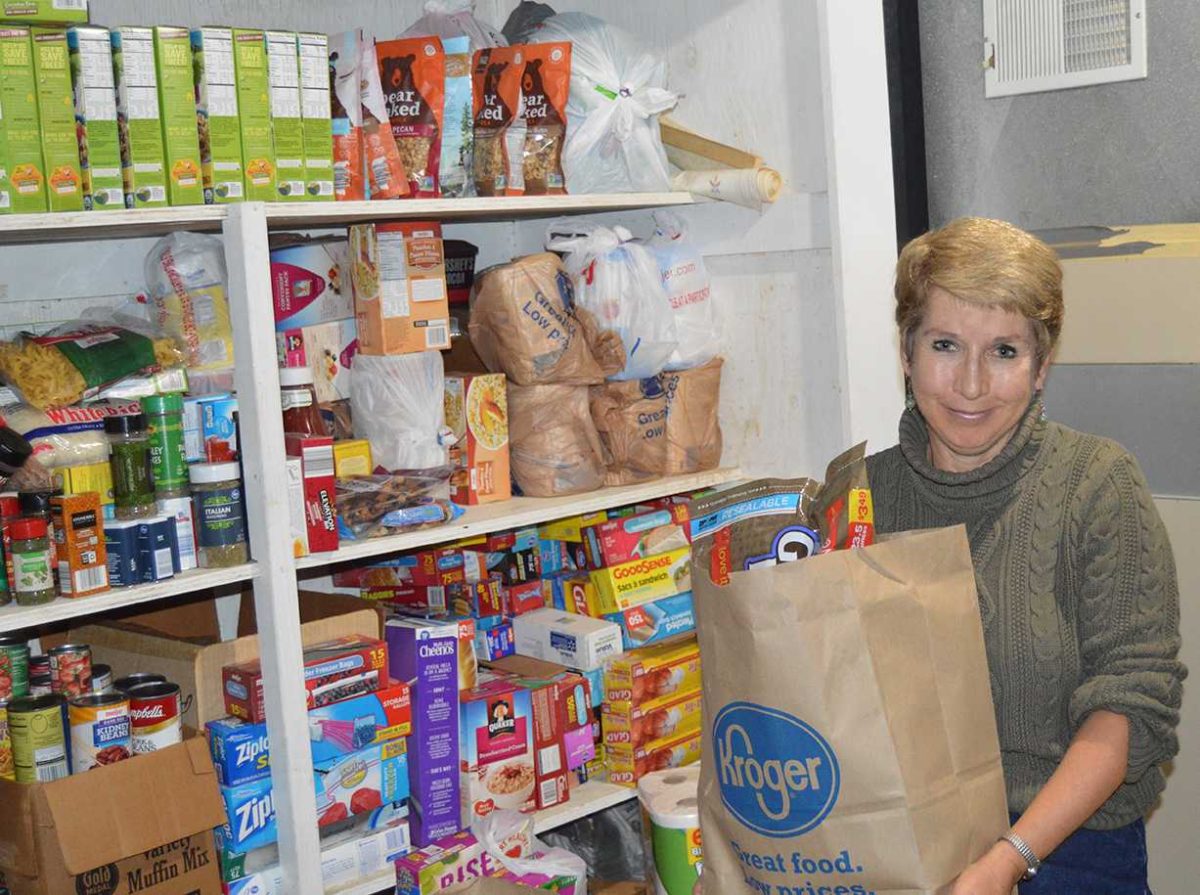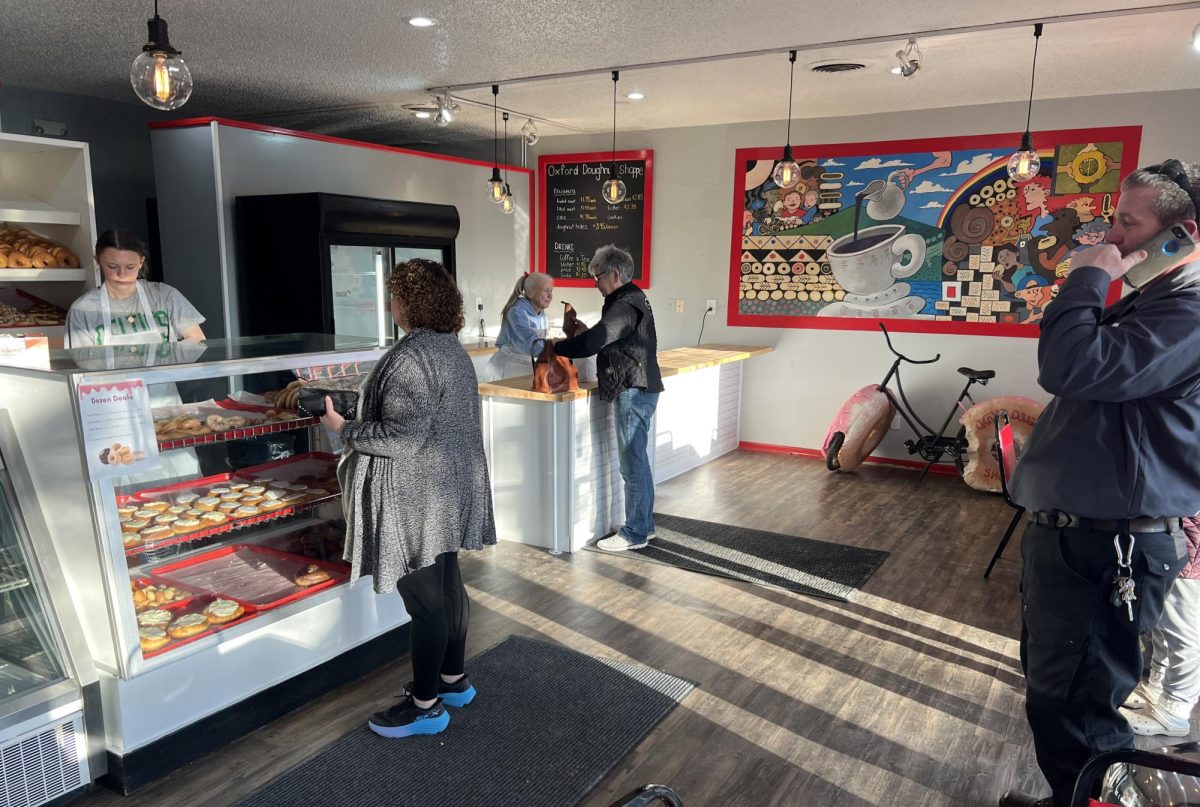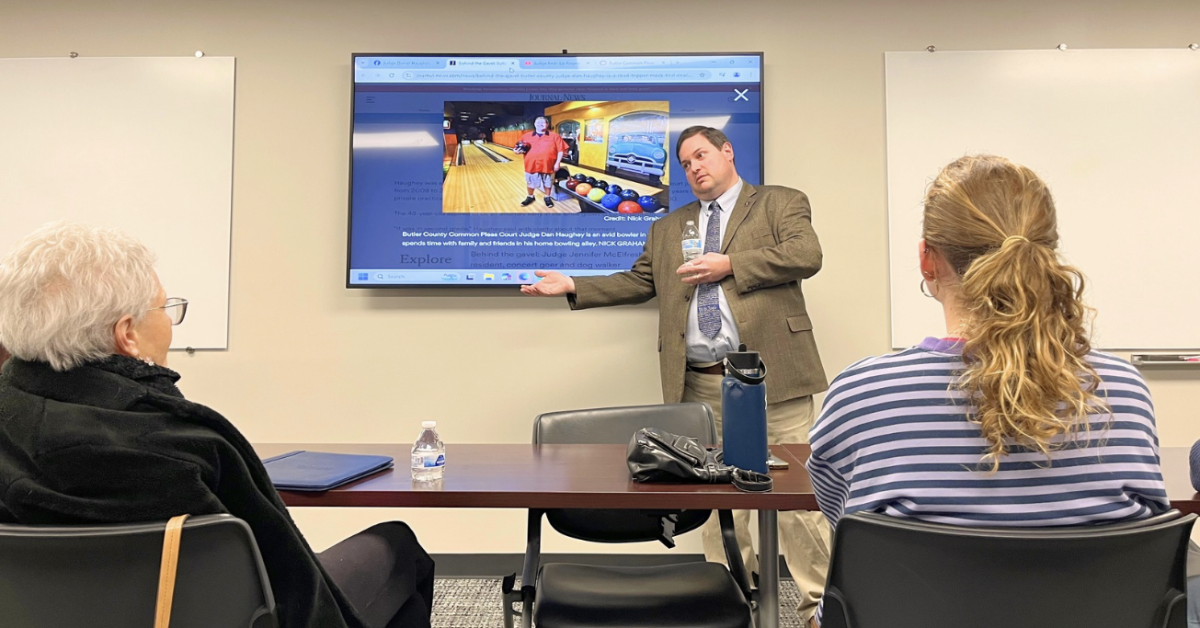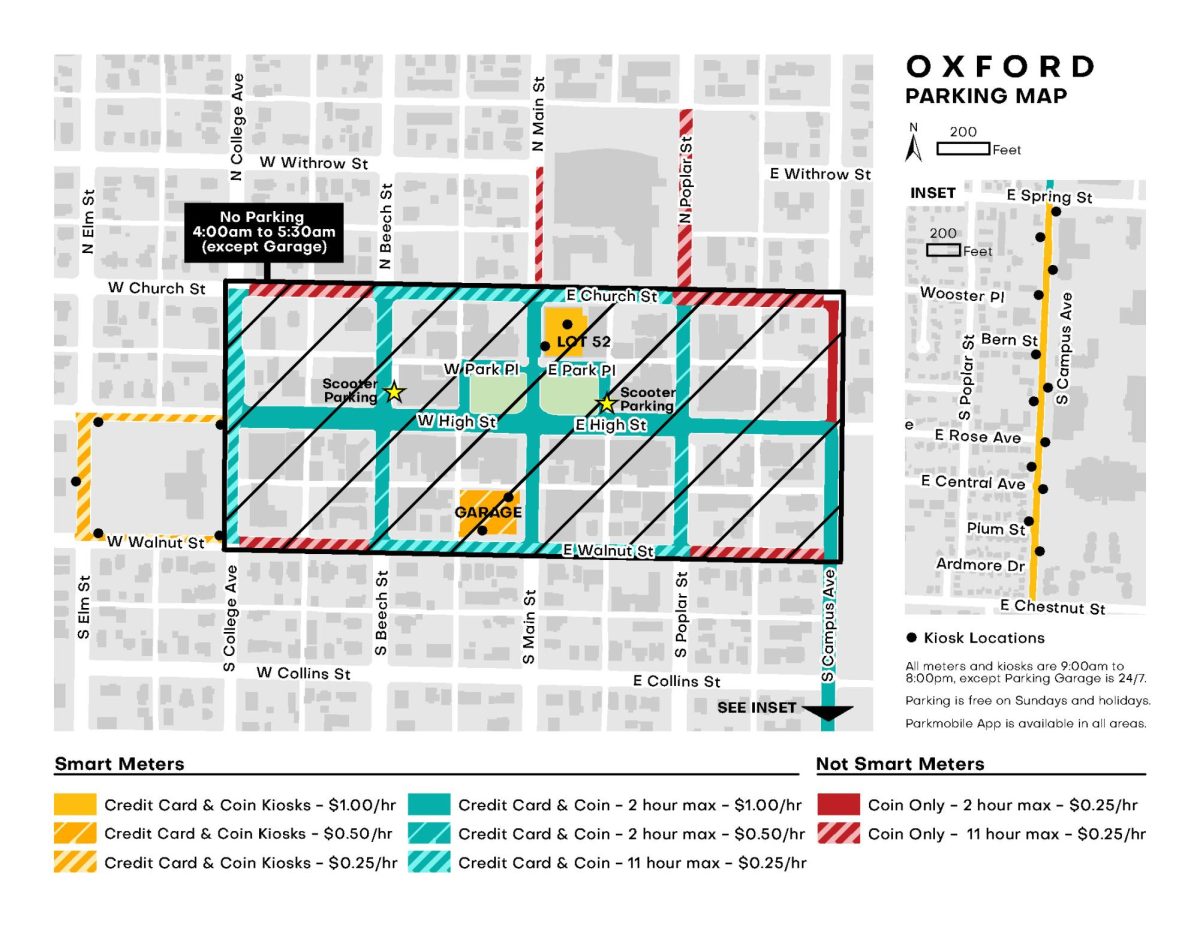Susan Hurst showed off her grocery receipt last week. At the bottom, it listed her yearly savings at Kroger—$1,100. This is nothing compared to what she has saved at Meijer so far this year, around $2,500, she said.
Hurst is a couponer. She pours over coupons.com, a website offering free, printable coupons for a variety of items. Hurst also uses the Kroger app for discounts and to make sure she gets the best possible deals each week.
“Why spend more than you need to?” she asked.
But Hurst doesn’t just clip coupons for herself. She also does it to purchase food for the Oxford Community Choice Pantry (OCCP).
“A lot of times, I’ll see stuff on sale that is not stuff we want, but I know it’s a good deal, and I know it’s something that somebody else might want,” Hurst said.
Hurst works as a business librarian at Miami University and only needs groceries for herself and her husband.
Whenever she sees items on sale that she has no use for, such as children’s cereal, she buys it for the pantry, usually purchasing a bag full of donations each week. She also tries to buy items such as detergent, shampoo and toilet paper that people need but cannot purchase with food stamps.
What she buys for the pantry depends on coupons and sales, but common items she purchases are Kellogg & General Mills cereal, Hamburger Helper and Ragu spaghetti sauce. She purchases both name brand items like these and also store brands depending on what is on sale.
Hurst keeps all of this in her basement, where she has a wall of shelves to hold food for both herself and the pantry. When she collects enough to fill the trunk of her car, she makes a trip to the pantry. She said she usually makes a donation every six to eight weeks.
“I’m just really happy to do it,” Hurst said. “[My husband and I are] just really fortunate that we can afford to do it.”
Hurst spends around four hours a week looking through circulars, making shopping lists and going to the grocery stores. She makes a trip every week to Kroger, Aldi and Meijer.
In recent years, stores have begun to limit coupon usage, with rules about only using one per transaction or not being able to use an online coupon in conjunction with a print one. According to Hurst, one of the best ways to get good deals is to use a coupon on an item that is already on sale, either on the clearance rack or part of a promotion such as buy one get one free.
One specific thing Hurst did was join the Driscoll Consumer Advisory Panel, which is a group that gives her discounts on Driscoll’s products for taking surveys. It is almost impossible to find coupons for produce, but by joining this group, she receives a coupon for each box of Driscoll’s product that she reviews or rates.
Customers receive $0.50 off for the first four surveys, $0.75 off for the fifth to 15th surveys, and $1.00 off for the 16th and anything after that. Hurst eats a lot of fruit, which is expensive, and these surveys have helped her save a lot of money.
Hurst said she rarely pays full price for anything, whether it be for herself or the pantry. Saving money like this on her own groceries has left her with more to spend on food to donate.
The OCCP serves approximately 300 households every month. However, it allows people to get food every two weeks, and there is no way to determine how many of these people are being double counted for coming in twice a month.
The pantry receives numerous donations from individuals as well as church groups, Miami clubs and various fundraising efforts.
“It’s a very generous community,” said OCCP Director Bob Ratterman.
Ratterman mentioned Hurst specifically when talking about people who donate to the pantry, describing how she brings a carload of items every six weeks or so that she purchased with her coupons.
Most people could take the time to buy something for the food pantry when they go grocery shopping, Hurst said. It’s as simple as buying a box of cereal to keep and an extra one for the pantry.
“I just think more people could do this,” Hurst said.












